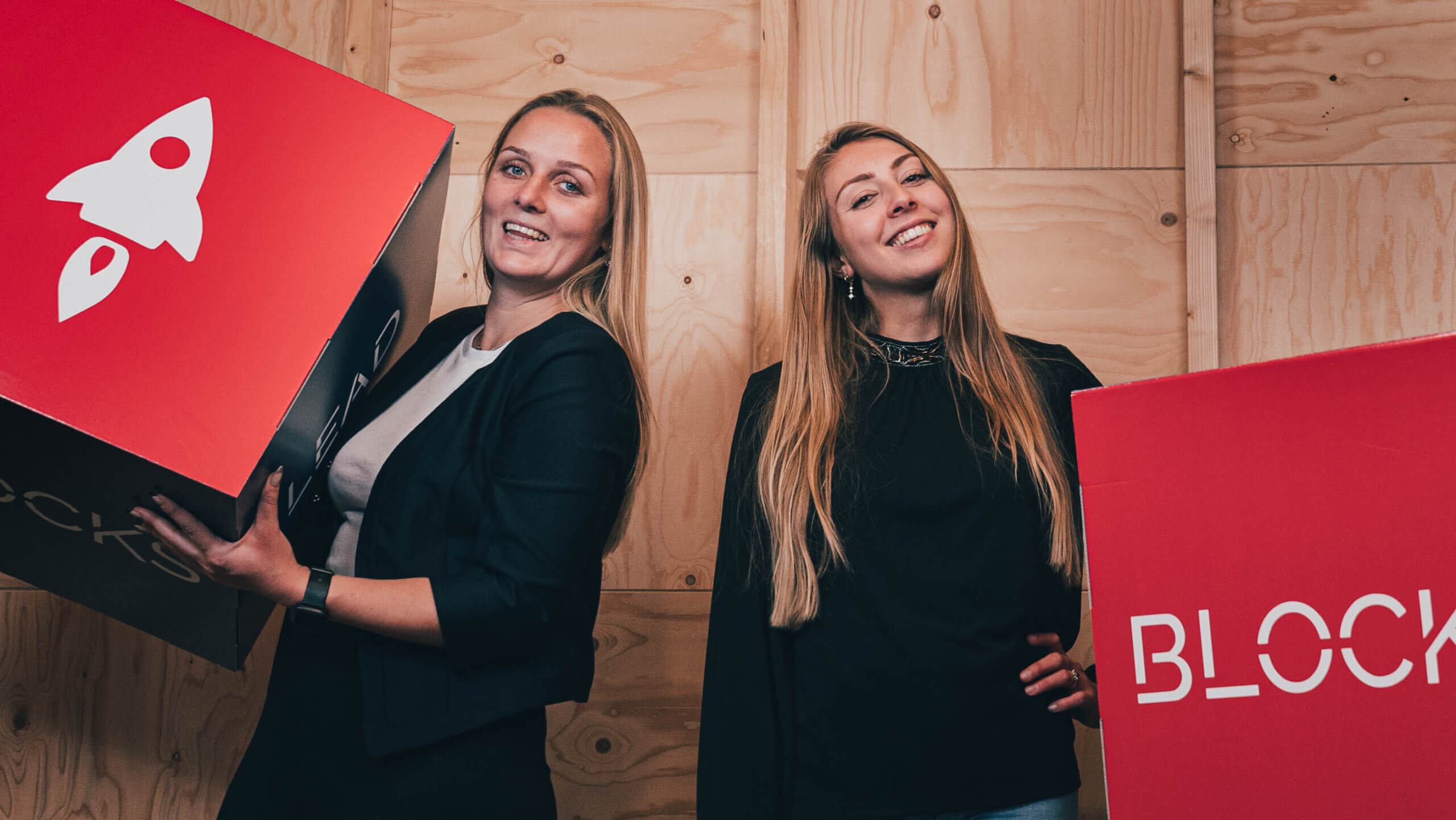What is B2B Lead Generation? Types of Lead Generation Explained, Examples and Best Practices.

Lead generation is the process of attracting potential customers and converting them into actual customers. It is important for businesses nowadays, as it can result in higher sales numbers and increased revenue. Therefore, many businesses open up big budgets to lead generation. What’s important to understand though, is that if you target the wrong prospects or you target the right prospects at the wrong time, they will probably not buy from you. Which basically puts all your resources through the drain. Auch.
There might be prospects out there who are immediately interested in your product or service, and ready to make a purchase. These golden opportunities are being called ‘good leads’ or ‘high-quality leads’. They will immediately boost sales and increase ROI significantly. However, many companies will choose quantity over quality, where they buy leads in bulk and with no regard to the quality of those leads. Ever cold-called a long leadlist with little success? Yep, that’s not fun at all. Most mostly, in terms of money, it will probably not give you the desired outcome either.
In this article, we will explore what lead generation is, how it works and different types of lead generation. We also asked our lead generators some of their best practices to share with you.
So if you’re already familiar with lead generation, scroll down to find our best 8 tips.
How does Lead Generation work?
Most commonly, a lead generation strategy involves a company website to promote your offerings. If any potential customer would search for your product or service, they may go to your website where you would want to have an online request form for a demo, newsletter or anything else that makes them want to leave their personal details in your hands.
Another common practice is buying leads in bulk. Leads you purchase are for instance targeted on a specific region, age category or anything else you find valuable in your search to the perfect leads. And this brings us back to those dreadful cold-calls with almost no connection to your potential buyer at all. Let’s skip this one.
With modern marketing automation tools, marketers are able to acquire high-quality leads. The main challenge here is to determine who those leads are, and if they’re ready to buy from you (buyer’s journey all the way! Check out more about that here.
The process of lead generation involves different lead stages, where leads progress from initial awareness to becoming qualified prospects. The key here lies with effectively managing and nurturing your leads through all those stages, so you can maximize your chances of converting them into your newest customer.

Types of Lead Generation
Lead generation typically falls into two main categories: outbound lead generation and inbound lead generation.
Outbound lead generation relies on more interruptive tactics to reach potential customers. The focus is not on attracting customers through valuable and relevant content, but instead on actively seeking out and engaging with prospects through tactics such as cold calling, email marketing, advertising and direct mail.
It can be an effective way to quickly generate leads and reach a large audience, but it can also be seen as intrusive and potentially annoying to prospects. It’s important here to find a balance between the number of contacts made and the quality of the lead generated, to ensure that your outbound lead generation efforts are effective and yield a good return on investment.
Is outbound lead generation dead? Not even close. Some resources like making those loud claims, and many tend to listen. Why? Because it’s not an easy task to do, and not all are qualified to do it.
Inbound lead generation is a marketing approach that focuses on attracting potential customers to your business through valuable and relevant content. The idea behind this is to establish your business as a thought leader in your industry and provide prospects with information they need to make informed purchase decisions. You can do this by a variety of tactics, such as blog posts, white papers, ebooks and social media marketing.
The focus with inbound lead generation is more on providing prospects a positive and educational experience, rather than interrupting them with aggressive sales tactics. The goal here is to build trust and establish a relationship with the customer, so that whenever they are ready to buy, you are on the top of their mind.
Is outbound lead generation dead? Not even close. Some resources like making those loud claims, and many tend to listen. Why? Because it’s not an easy task to do, and not all are qualified to do it.
Different Stages in Lead Generation
Every lead, no matter where it comes from, goes through a certain journey to become your client: awareness, attraction, outreach, conversion and close.
Each stage consists of multiple steps needed to qualify and nurture potential customers through the sales funnel. To ensure desired results, follow these eight stages in the lead generation process: analysis and planning, research, messaging, pre-targeting, landing pages, email sequences and phone calls, reporting and new planning.
Stage 1. Analysis and planning
Defining your goals is the first step to generating leads. List the outcomes you want to achieve and the KPIs you will use to measure progress. For instance, work backwards from sales quotes to calculate how many leads are needed per month.
Decide who will be responsible for which tasks. Lead generation involves writing, research and analysis. Generally you will need a copywriter for emails, ads and social media, analytics team members to pull and deliver accurate sales data, a sales representative to follow up on your leads gathered and a VP or manager who can align marketing and sales.
In addition, you will need to create an ideal customer profile (ICP). It serves as a map for finding leads that match the typical demographic, firmographic, and technographic characteristics of your best customers. Don’t confuse this with a buyer persona! A buyer persona will go deeper into the pain point of your customer, and their motivation for doing a purchase.
Stage 2. Research
In order to understand where your best leads come from, you have to do research. Pay attention to patterns that might emerge like recurring pain points or use cases and then figure out how to position your product as a solution.
The more effectively you map your product’s value to the prospects’ needs, the more useful and engaging your content will be.

Stage 3. Messaging
Potential leads should feel like your content is speaking to them directly, regardless of where they find it. Blog posts, ads, social media posts and eBooks should all be created with the customers’ needs in mind. Landing pages should be optimised with powerful copy and strong CTAs to help increase conversion rates.
Keep your funnel and the customer’s buyer stage in mind when designing these messages. Earlier stages in the buyer journey should focus on building awareness with blog posts or social media posts. As leads get warmer, highlight your value proposition and prompt conversion with highly tailored emails that reference relevant PDFs, case studies or testimonials.
When using direct communication such as LinkedIn messages, explain how your product or service can solve each lead’s specific problem. Make sure you don’t start writing about this immediately though. You will need to take some time to warm up your lead. You will find more on social selling right here.
Stage 4. Pre-targeting
Pre-targeting is a form of online advertising designed to foster brand familiarity within a specific audience. It targets consumers based on their previous behavior. Brands use this to warm up leads and prepare them for more in-depth sales pitches. By this, they will be more likely to click on your ads or respond to an email or call, as they are already familiar with your product or service.
You can use social media as an effective method to gain traction. LinkedIn, Facebook, Instagram or TikTok are good platforms that can increase your brand recognition. Make sure you align the choice of your platforms with your buyer persona. There’s no point in advertising on a platform your ideal leads don’t make use of.
In lead generation, pre-targeting is being used to warm up leads that are segmented as your ideal customer. The approach is more personal, as LinkedIn is being used to send out personal messages and invitations that resonate with those leads. These techniques build a bridge between you and your ideal client so if they’re ready to buy, you are on top of their mind. The strategy is more personalized as they feel like they’ve already ‘spoken’ to you and know you personally.
Stage 5. Landing page
Strategic landing pages provide two main opportunities for lead generation: as a link destination for CTAs on ads and in emails.
Landing pages should be designed to prompt leads into action. This can for instance be providing their contact information or scheduling a sales call. The thing here is, leads don’t take action unless they’re convinced your product or service is worth it. That’s why landing pages must be compelling. Make sure these pages are mobile friendly -you will be surprised how many people do all their research on their phones- and write persuasive copy with strong CTAs.
Stage 6. Email sequences and phone calls
There’s no exact timeframe we can give you from where a lead will turn into a customer. Sometimes it takes a couple of weeks, sometimes it takes almost a year -or longer. During your outreach, encourage leads to try free samples such as a product trial, or make another purchase that aligns with their history.
Some tips for making phone calls and sending emails:
- Prepare for different email responses: Leads might respond positively, negatively or not at all. If you don’t get a response, follow up after 24 to 72 hours to ensure your message is received.
- Use a CRM platform: CRMs and other email marketing software can show you when an email has been opened, how many times it was viewed and if there were links clicked that you provided in your email. By this you can have your sales reps prioritise certain phone calls.
- Set auto responses: If someone downloads a certain amount of content from your website, signs up for a product trial or makes a purchase, they should get relevant email follow up. Thank them or ask for feedback is a great way to show them their opinion matters.
- Include an ‘’unsubscribe’’ link: Always include a button in your cold emails that allows people to unsubscribe from your mailing list. This ensures you comply with spam laws, decreasing changes of emails winding up in the junk folder or annoyed customers.
Stage 7. Reporting
Tracking KPIs is necessary at each stage of the lead generation process, but reporting is crucial after you’ve passed on leads to your sales team. When you follow the lead’s journey it will help you refine your strategy over time.
You start your reporting by creating files that show the number of emails sent, emails opened, and unsubscribe requests. Try to pinpoint where leads go cold and how to change your messaging to keep their interest longer.
Stage 8. New planning
Analyzing and planning shouldn’t be overlooked in your lead generation process. It helps you learn from what happened in the previous cycle and prepare for the next one.
Take stock of your marketing and sales KPIs, strategies that worked or didn’t work and brainstorm ways to improve.
Best Lead Generation Practices
We’ve had a good chat with our lead generators. Because we don’t gatekeep, and want to share their insights and experience with you. So, below we crafted a list of 8 best practices when it comes to lead generation. All for you.
- Consider the end-goal first
Before anything else, you should clearly define what a lead means to your business. Do you consider anyone that signs up for your offer as a lead, or someone that fills out your contact form, or maybe even someone who requests a callback.
Whatever it is, it’s important you define it up front. It’s very basic but not less essential to do. Why? Because it will form the metrics you will use to measure how successful your lead generation campaign is.
- Set up a sales funnel ahead of time
A sales funnel is essential to a streamlined process to convert leads into customers. A typical online lead generation funnel has a few key steps:
– marketing: advertising your product or service to bring visitors to your website through content or social media.
– demand generation: using targeted programs such as webinars, events, whitepapers and live demos or free trials. Depending on what the lad does or how they interact with your website and content will categorise them as a target or prospect.
– nurturing: developing and reinforcing the relationship with leads or prospects at every stage in the funnel to ensure they continue the journey to the next stage.
– action: the lad became qualified and completed the funnel by purchasing your product or service.
- Implement live chat to generate leads
Live chats are a great way to engage with your customers as soon as they get to your website. Starting up communication like this gives you the chance to guide them, answer questions and understand their specific needs.
- Encourage online reviews
According to BrightLocal, 88% of respondents confirmed that they trust and will check online reviews before trying something new. 68% are willing to write a review when they are asked to. This highlights the opportunity to really boost conversions and sales. Encourage your existing customers to share their experience to attract new customers and enhance your brand image.
- Display your contact number
Even if your customers don’t actually call, including a contact number on your website really helps to create trust and cement your credibility. Adding a phone number at the top of your page has been proven to increase conversions by 53%.
- Create great content that draws visitors
Content is a great way to grab users’ attention. Content that is relevant, catchy and informative can go a long way to convincing users to do business with you. Remember though not to only use content to promote your product. Use your content to provide customers and leads with valuable information that serves them. Users will see an industry leader if your content portrays the right image.
- Show social proof
Testimonials say a lot about your credibility -once again, and social proof and testimonials on your website are a great way to showcase other people’s positive experiences. Make sure though that these recommendations are from actual people or users from your product - Promote your brand with contests and affiliate programs
Users love it when prizes are on offer, and they love it even more when they win them. It helps you grab their attention. Get them to write some slogans or taglines, participate in quizzes, post pictures or share your content. Then offer something in return.
Conclusion
Lead generation, in any shape or form, is a great way to improve your sales numbers. Make sure you target specifically instead of going for a quick bulk option. Your leads will love your personal approach. Take time to get to know them and what their pain points are. Put this together on your buyer journey and align this with your sales funnel. Want to have a look at how we do lead generation through LinkedIn? Book a demo call right here.



